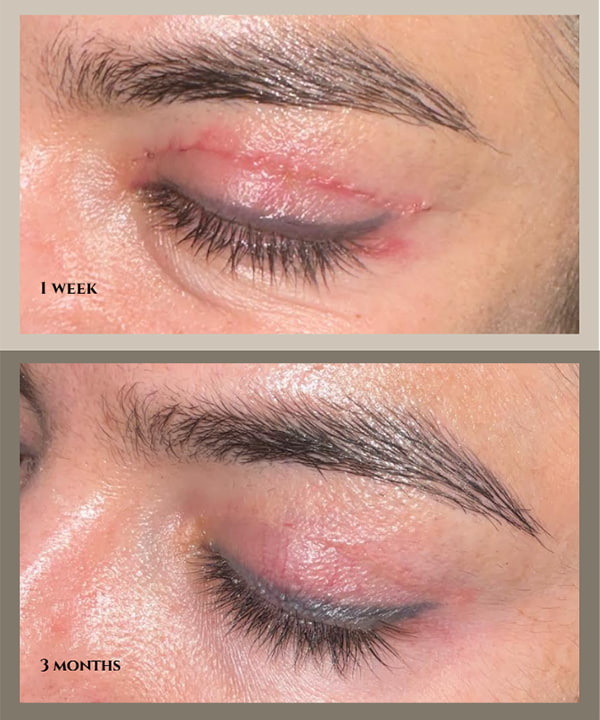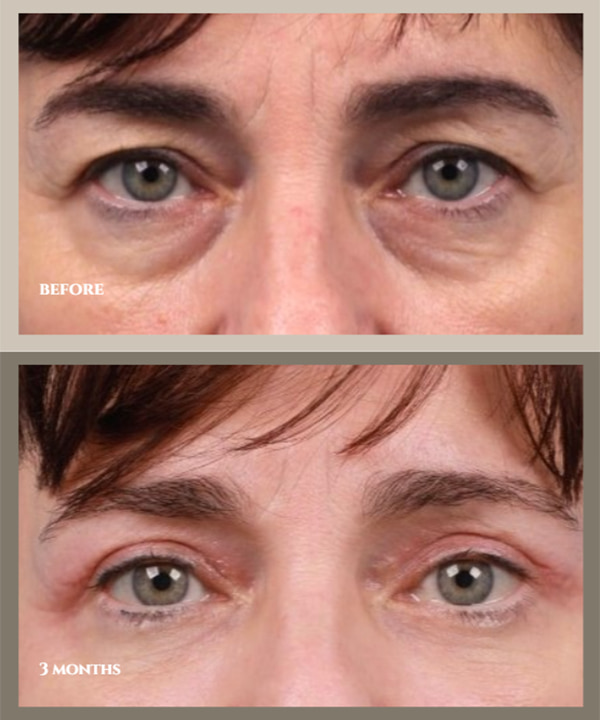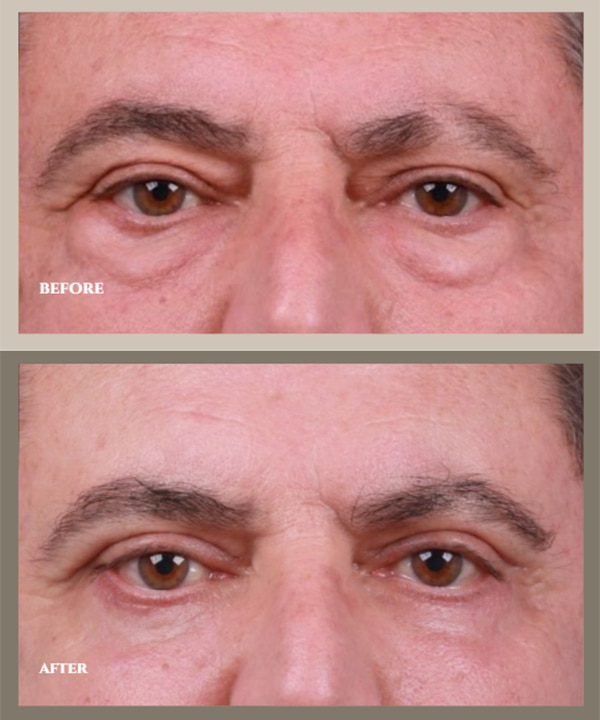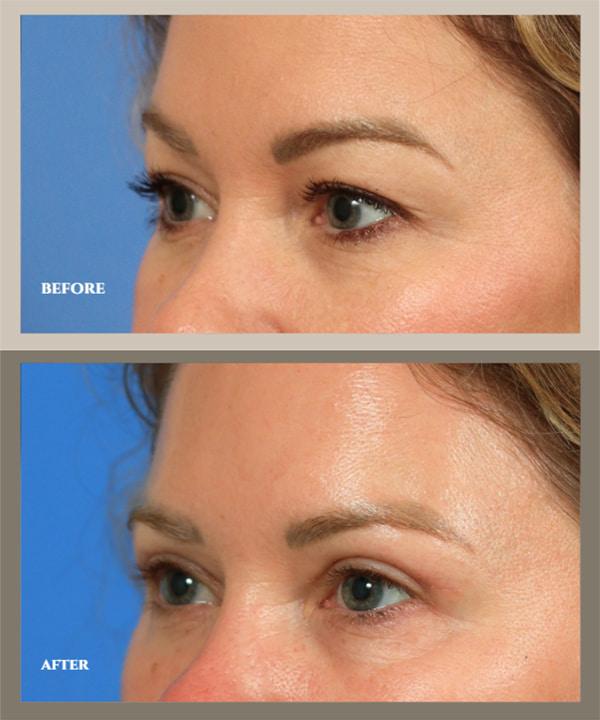



An eyelid lift, or blepharoplasty, is one of the most effective ways to refresh your eyes by removing excess, droopy skin that can make you look tired or aged. But as its popularity grows, so does the spread of misinformation, especially on social media, where myths and exaggerations run rampant. This often leads to patients having unrealistic or distorted expectations about what eyelid surgery can actually accomplish. From promises of a “scarless” procedure to claims that surgery can completely change your eye shape, or lasers that rival surgical tightening, many of these trending ideas deserve a closer, more skeptical look. In this blog, I want to set the record straight. Too often, patients come in wanting me to debunk the latest blepharoplasty facts they have picked up on TikTok. If you are thinking about this relatively common procedure and want the real story about what is actually possible and what is just hype, let us clear up the most common misconceptions once and for all!
Let’s clear this up right away: any surgery that involves making an incision through the skin will leave a scar. That’s simply how tissue healing works. However, a skilled blepharoplasty surgeon places incisions strategically to minimize their social visibility. For upper eyelid surgery, the incision is carefully hidden within the natural crease of the eyelid. For lower eyelid surgery, incisions are either placed on the inner surface of the lower lid (making them virtually invisible) or just beneath the lower eyelashes, where the scar blends with natural lines.
When patients ask if eyelid surgery is “scarless,” they’re usually wondering, “Will the scar be noticeable?” When performed correctly, the healed incision should be very discreet—only visible if you look closely or use a magnifying mirror. But completely invisible? That’s a myth. Any surgeon who guarantees zero scarring is not being realistic or transparent.

A real patient example of favorable upper eyelid blepharoplasty incision healing, shown at 1 week and 3 months after surgery. The scar fades over time and eventually becomes difficult to notice at a casual glance. However, a closer look, such as with a magnifying mirror or up close, will reveal a faint line corresponding to the actual scar. This is a normal and expected outcome for any surgery involving the skin.
Blepharoplasty does not change the shape of your eyes, but rather it reveals your natural one. Over time, aging skin, volume changes, and tissue laxity can alter the eye’s appearance, making it look tired, sad, or downturned, especially around the outer corners. This is due to sagging, excess skin. Eyelid surgery carefully removes this excess skin and, when needed, addresses bulging fat to restore a smoother contour without the noticeable “lumps” or “bulges” of aging.
The natural upper eyelid crease runs parallel to the lash line, and a properly performed blepharoplasty maintains this alignment, resulting in a refreshed but natural almond-shaped eye. When a traditional blepharoplasty is performed, without additional reconstructive or more invasive maneuvers, the inner and outer corners of the eyes remain unchanged. This means the actual shape of your eyes stays the same.
However, excess skin often hides part of the eyelid and eyelashes, so when it’s removed, the true shape of your eyes is revealed. This subtle but meaningful transformation is one of the most rewarding outcomes I see repeatedly in my blepharoplasty patients.
If you are seeking a completely different eye shape, blepharoplasty is not the right procedure, and it should never be marketed as such.

A real patient example showing how upper and lower blepharoplasty does not change the natural shape of the eye but reveals it. The inner and outer corners remain in the same position before and after surgery. Hooded upper eyelid skin is removed, allowing the eyelid platform to align parallel to the eyelashes. The lower eyelids are smoothed, not pulled or altered.
No, a traditional eyelid lift (blepharoplasty) will not give you the “fox eye” look. That distinctive appearance, characterized by sharp, uplifted outer corners of the eyes, elevated and angled brows, and a cat-like tension along the eye’s edges, requires specific surgical techniques that go beyond a standard blepharoplasty.
The fox eye effect is typically achieved through invasive procedures like lateral canthopexy or canthoplasty. These surgeries involve repositioning or tightening the lateral canthal tendon (the strong deeply-placed attachments at the outer corner of the eyelid) to create that upward lift and elongation. These are more complex, reconstructive procedures that require specialized expertise and carry different risks and recovery considerations compared to a simple eyelid lift.
Trying to use blepharoplasty alone to create this effect is like expecting a hairstyle to give you a facelift. It simply isn’t the right tool for the job, and pushing it beyond its intended purpose can lead to disappointing or unnatural results. If the fox eye look is your goal, it’s important to consult with a New York facial cosmetic surgeon experienced in these specialized procedures rather than relying on blepharoplasty alone.
This is a common misconception because eyelid and brow aging often happen together, but they are distinct issues. In some cases, one may be the primary cause; in others, both may contribute. Expecting one surgery to fix both is unrealistic.
Think about lifting an object: you need to lift it from above, not below. For eyelid surgery, the incision is placed along the natural crease above the eyelid. For a brow lift, the incision is higher—above the brow itself and hidden within the hairline. Trying to lift the brow with blepharoplasty won’t work because the incision is too low to reposition the brow effectively.
When brows sag, they can droop over the upper lids, mimicking and worsening eyelid heaviness. If brow descent is significant, the best solution may be a combination of eyelid and brow lifts. Treating only one will leave the other issue unaddressed.
Using blepharoplasty alone to solve a brow problem can lead to removing too much eyelid skin, causing hollowing or restricted eyelid movement. If heaviness originates in the forehead or brow, a brow lift is likely the right choice. A skilled surgeon can assess this very easily by examining you and helping you decide if you need an eyelid lift, a brow lift, or both.
Since these are elective surgeries, your goals and expectations matter most. Personally, I avoid offering treatments that won’t meet expectations. For example, if eyelid skin excess is clear, I won’t recommend a brow lift alone.

This patient underwent upper and lower blepharoplasty. The lower lids appear significantly smoother, while the upper lids were improved by removing bulging fat pads and the true amount of excess skin. He had noticeable brow heaviness but chose not to proceed with a brow lift, which leaves some fullness in the upper eyelid area. This result reflects a customized treatment plan based on shared decision-making and realistic expectations.
As of 2025, there is no laser, energy device, or machine that can replace a surgical excision of excess skin and fat. While lasers can modestly tighten the skin through heat, causing some contraction (notice I’m still not saying “shrinkage”) and triggering new collagen production, these changes pale in comparison to the structural results achieved with surgery.
If you’re dealing with true skin redundancy or fat herniation, a laser won’t deliver a meaningful fix. It may improve texture and fine lines, but it cannot contract skin beyond its limits. Repeating the treatment over and over won’t add up to one surgical result either. That approach isn’t cost effective, and for many skin types, it’s not even safe.
I’ve seen countless patients invest heavily in energy-based treatments, only to end up right back in the same consultation they started with, only now more frustrated, and still needing surgery. That doesn’t mean lasers are useless. But they should never be marketed as an equivalent to surgery. Because they simply aren’t.

Although this patient had only a mild amount of excess upper eyelid skin, the delicate and refreshed result was achieved through surgical excision rather than laser skin resurfacing, which produces only a small amount of skin contraction. Laser treatments may improve thin, crepey eyelid texture and make skin appear smoother, but they do not reduce what is clinically a “pinchable” amount of skin.
Most myths come from familiar places: influencer claims, outdated forums, and a healthy dose of wishful (if not magical) thinking. But once they circulate, they gain traction. Eventually, they shape patient expectations, often in ways that aren't physically possible.
And that’s the setup for one of the most common complications in cosmetic procedures: unmet expectations. Myths lead patients to invest in the wrong treatments for the right problems. The perception of aging and the desire to improve something may be completely valid, but the chosen solution is often inappropriate or not grounded in anatomy. The only real outcome in those cases is a financial loss.
The antidote? Clear, accurate information. A straightforward consultation, even if the plan isn’t what you were hoping to hear. A proper treatment plan is based on your anatomy and your goals. If your physician is simply saying yes to what you want, think twice—it might be a low-probability fix.
Blepharoplasty is a structural anti-aging procedure designed to remove excess skin and smooth out bulging fat pads—the most common signs of aging in the upper and lower eyelids. There is no one-size-fits-all technique. Blepharoplasty can address skin, fat, muscle, and even ligaments, depending on your unique anatomy. The approach is customized because aging doesn’t happen the same way for everyone.
When considering any aesthetic procedure, ask yourself:
Do I understand the issue I’m trying to fix?
Do I know all of my options—and what each one can realistically achieve?
Am I committing to a procedure, or to the outcome I want? Or both?
Clarity on these points is the only way to make the best choice.
Thanks for reading-
Dr. Renata
Medical disclaimer: The results and experiences shared in this blog reflect real patient outcomes from procedures I have personally performed. They are intended for educational and informational purposes only and should not be interpreted as medical advice or a guarantee of results. Cosmetic surgery outcomes vary based on individual anatomy, healing response, and other personal factors. Every surgical procedure is both a science and an art, and results will differ from person to person. For personalized medical guidance, please consult with a qualified and board-certified healthcare provider.
Life can be demanding, and we understand. For patients who may be traveling, preparing for a last-minute occasion, or simply looking for a more exclusive experience without any inconvenience or delays, we are pleased to offer preferred patient scheduling. Patients may undergo a personal consultation as well as tailored cosmetic treatments during evening hours or weekends. Appointments are required and premium rates apply. Please call our office to inquire about preferred patient scheduling and allow us to create an exceptional experience just for you.
Request a ConsultationAt RENATA Facial Cosmetic Surgery, patients receive excellent customer service, communication, personal attention, and scheduling flexibility. Located in the historical and breathtaking waterfront neighborhood of DUMBO, Brooklyn in New York City, our office serves local neighborhoods including Brooklyn Heights, Park Slope, Williamsburg, and Cobble Hill, as well as Manhattan and New York City at large.
Our office location is:
58 Prospect Street, Brooklyn, NY 11201